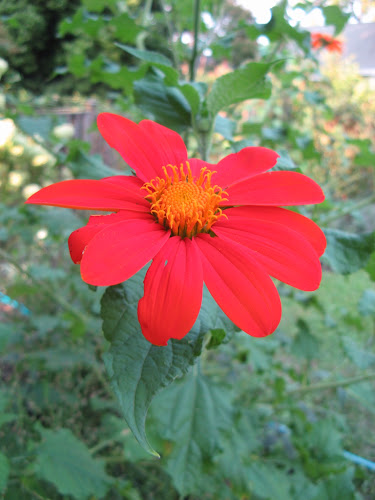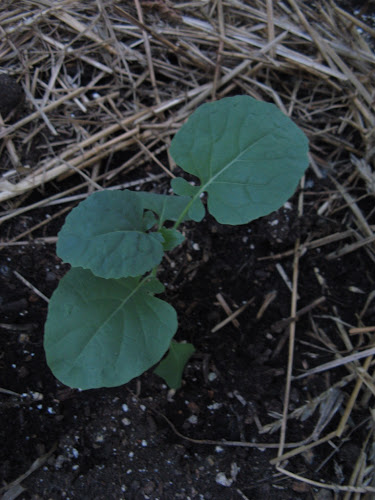Tuesday, September 24, 2013
Wednesday, September 11, 2013
Taking Stock of Summer Failures and Successes
Much of this season's plants will keep producing right up until frost, but it's about time to see what did well this summer--and what didn't.
Okra: a return to Clemson spineless over the poor performing heirlooms of last summer was stymied by an unusually cool summer.
Mexican sour gherkin/ mouse melon: Yay! Cuke flavor for salads without dealing with powdery mildew or the disease that the cucumber beetles bring.
Tomatoes: Tess's land race currant tomatoes were unstoppable and super sweet, a winner. Japanese black trifele were not super vigorous, but tasty, and both held up to the disease I know lurks in my raised beds. I just need to grow more. *This was my first year growing tomato plants from seed.
Lipstick pepper: My best success with sweet peppers so far. Again, not super productive, but their small size guaranteed much more success. Tunisian baklouti peppers did well as always.
Lima beans and black eyes peas both did fine but had to be wrapped in bird netting to keep the rabbits out. Something is still getting to the black eyed peas (voles?) I like growing beans because of their relative ease (other than rabbits), but I feel like I should be getting much more beans than I do.
I left one bed pretty much empty this summer, saving room to put in Brussels transplants for fall, and this worked well while also giving me room for scallions and leeks.
The artichoke I planted in spring never did much. I'll give it until next spring to show me something. The collards, Chinese broccoli, and kale that I let languish all summer only served to invite white flies. I'm still deciding if I should let them stay into fall or pull them and start over.
Tatume squash: an early loss, succumbing to powdery mildew, after showing so much promise with squash vine borer resistance. Seminole pumpkin: these take a lot of space--and only two pumpkins are the result!
It's always sad to see summer waning, but the fall here almost makes up for it.
Monday, September 9, 2013
Friday, September 6, 2013
Seminole pumpkin update
What I first suspected as poor blooming due to not enough sun was soon discovered to be predation! Some furry creature has eaten most of the female flowers on my plants, but two escaped and are growing nicely.
Thursday, September 5, 2013
Lady bug explosion!
A few weeks ago, I was considering using pyrethrin to combat a white fly infestation. I'm glad I hesitated, because I could have wiped out a huge population of lady bugs!
I noticed some activity on my asparagus patch, where I discovered all stages of the lady bug present in large numbers.
Now get to work, guys!
I noticed some activity on my asparagus patch, where I discovered all stages of the lady bug present in large numbers.
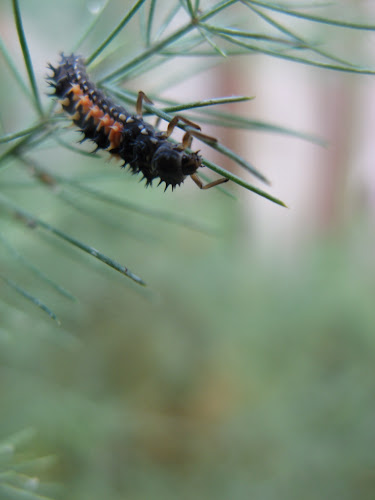 |
| lady bug larva |
 |
| larva and pupa |
 |
| adult |
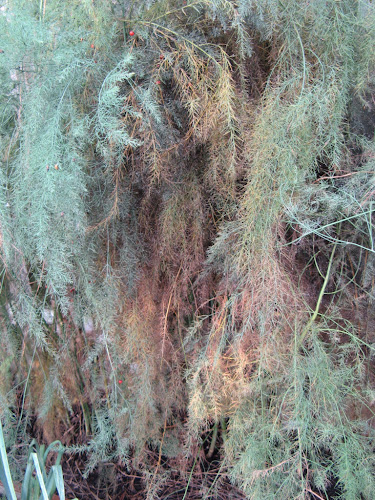 |
| This, I cannot explain: there is a sticky, smelly substance on the plants--is it a ladybug excretion? The dead branches could be coincidental, but I have read that lady bugs can emit a foul odor. |
 |
| Some of the color in the background is asparagus berries, but you can see the numbers here. |
Wednesday, September 4, 2013
Before you cut a flower ...
... Always do a quick search to determine how to treat it. Tithonia (Mexican sunflower), below, has hollow stems that must be seared with a flame or boiling water--or it will immediately wilt.
Luckily, I only cut one blossom because I could not bear to take it away from the butterflies. I did experiment to see if the heat treatment would reverse the wilting several hours after cutting, and did, completely.
Luckily, I only cut one blossom because I could not bear to take it away from the butterflies. I did experiment to see if the heat treatment would reverse the wilting several hours after cutting, and did, completely.
Tuesday, September 3, 2013
Broccoli before and after vacation
As I prepared this post before vacation, I had the following thoughts. "Maybe this will be there year I get the timing right for a broccoli harvest. It is certainly the best looking start."
I had surrounded the bed with row cover to keep out rabbits and put down some sluggo, but I forgot one thing: cabbage worms!
I came home to this:

Because I planted the broccoli at the base of my okra, I could not easily cover them with row cover, as I should have done. Cabbage worms are easy to hand pick, but since I was gone over a week, they had free reign. Sigh!
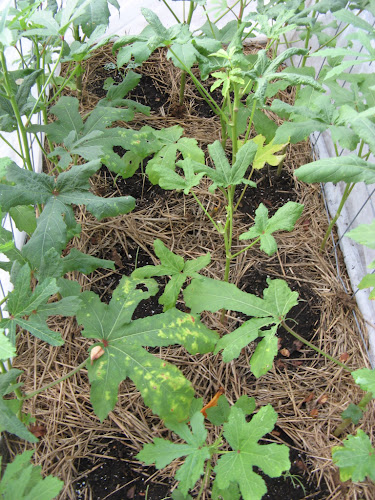
I had surrounded the bed with row cover to keep out rabbits and put down some sluggo, but I forgot one thing: cabbage worms!
I came home to this:

Because I planted the broccoli at the base of my okra, I could not easily cover them with row cover, as I should have done. Cabbage worms are easy to hand pick, but since I was gone over a week, they had free reign. Sigh!

Vacation's Over
It's nice to come home to the garden, but there is a ton to do! I'll be seeding and supplementing the vegetable garden in the coming weeks, and trying to spiff up overall for the neighborhood garden tour at the end of the month.
Subscribe to:
Posts (Atom)









